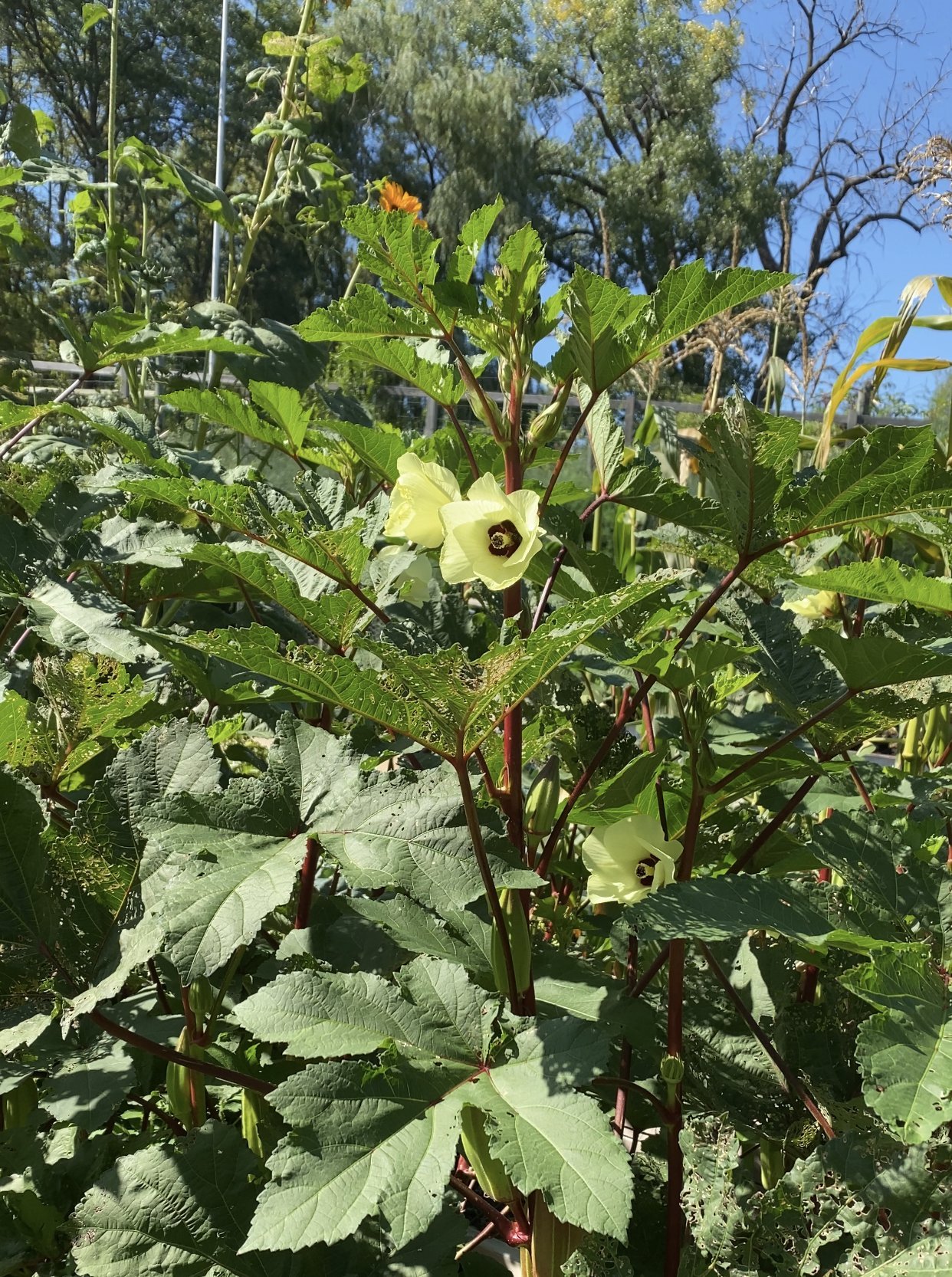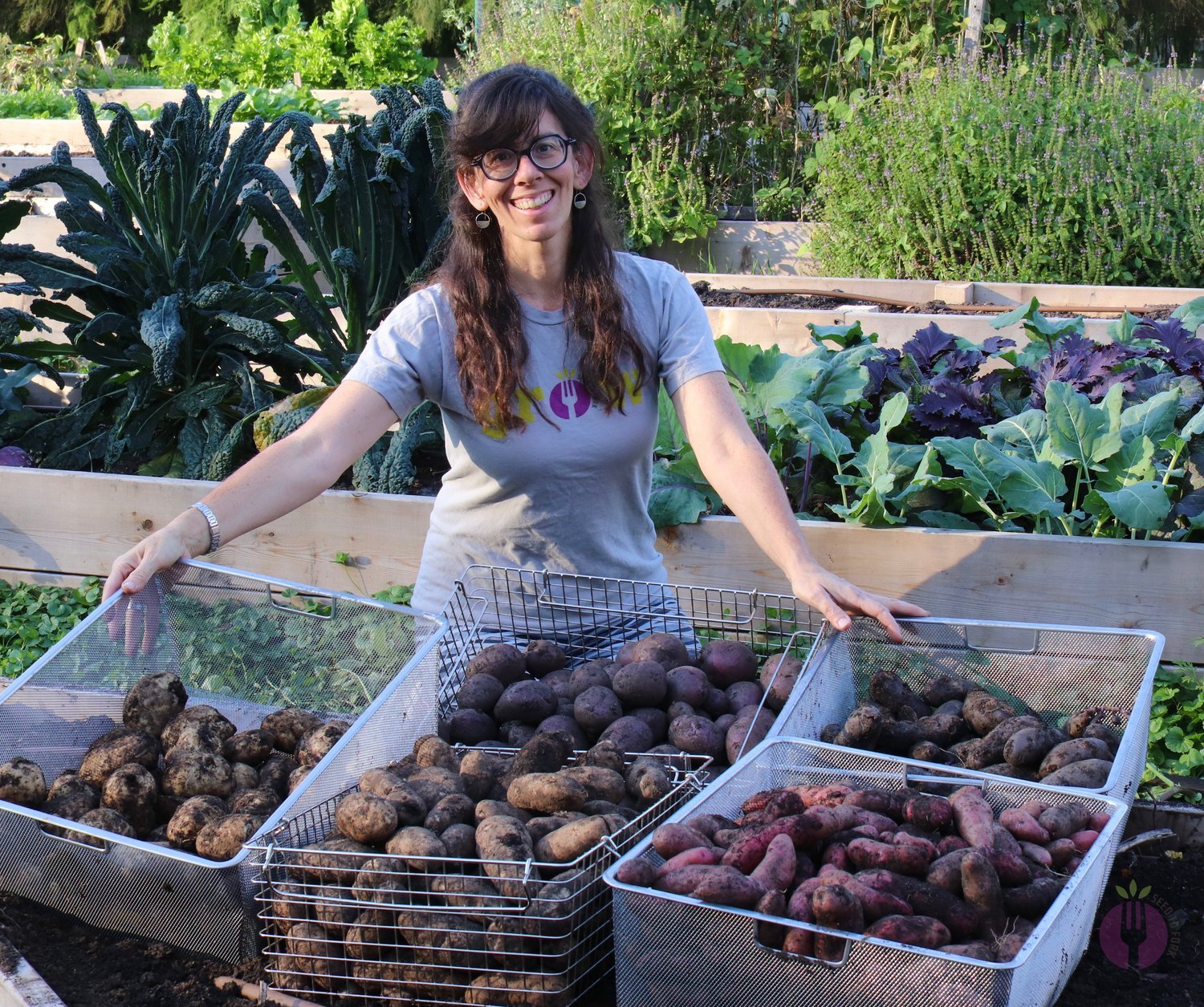2021 Garden Lessons
A new year is finally upon us. I am not one to make massive resolutions, but I deeply appreciate this opportunity to leave behind in 2021 that which didn’t serve our garden and move into 2022 with even more clarity.
Last year was tumultuous all around. Globally we continue to live through historic times, and the stress and tension of everyday life are downright exhausting. The garden is more important than ever. It grounds me in every way. While I enjoy these quiet weeks of subzero temperatures by the wood stove, not a day goes by that I don’t dream of hot and sticky summer days lazing around the garden endlessly admiring all that flourishes. Lately, I’ve been mentally wandering the 2021 summer garden and wanted to jot down the highs and lows that last year brought to the garden.
What 2021 Taught Us
Some square footage in 2021 yielded very little food, including our peanuts that were ravaged by rodents well before maturity, despite our very effective barn cat.
We typically allocate 4’x12’ for peanuts, so that was a large bed that yielded, well, not even peanuts. As much I LOVE to grow them for both their educational opportunity and the thrill of having them in the garden, I will plant a markedly smaller peanut garden in 2022. I want to minimize what has proven to be a two-year trend of rodents >> humans.
Hill Country Red Okra was a visual delight but I rarely harvested it young enough to be palatable.
Okra was a novel vegetable for us last year. I chose an heirloom variety that was visually stunning. I confess, we only ate it a few times — roasted and raw. I preferred it raw. We did donate veggies including okra several times, but as it’s not in our wheelhouse of knowledge, the fast and familiar foods always seemed to win out come dinnertime.
I managed to harvest and save seeds and have used some dried pods in an everlasting bouquet. It was more of a visual garden anchor and really fun experiment to observe how it grew from seed. It contributed vertical interest and structure more than anything. It grew well started indoors in 3” newspaper pots and transplanted into the garden right before a June heatwave — well, it did protest during the heatwave but recovered quickly once the temperatures moderated.
Cape gooseberry, a readily self-seeding subtropical perennial, is a taste of the tropics that can be grown as an annual in our chilly zone 4 garden.
One of my favorite unusual subtropical fruits to grow underwhelmed yet again. Despite loving their superior flavor over their cousins, ground cherries, we consumed less than a dozen cape gooseberries from a 4’x6’ space. Twenty-five square feet for a few fruits here and there. It was a grossly underproductive use of space. However, I don’t know if I can go more than a year without their tropical punch. Sometimes space allocated for an occasional pop of wow must be measured with a different kind of productivity. It isn’t always about volume. This delicacy is about a true food experience, and I am certain I won’t be able to resist the urge to sow them very soon (they take extra long to germinate and establish). They also set me up for a happy population of three-lined potato beetles in June through August — a mixed blessing of beetle picking which means quiet and contemplative garden time.
Relatedly, I abandoned our summer carrot bed due to my Dad’s terminal illness and decision to go on hospice; upon returning after his death I was swallowed by tomato harvesting and processing and didn’t get around to thinning them out as well as I’d have if I was around. I am thus, hopeful, for a simpler 2022 without the tight sandwich generation squeeze.
Some years are modest, and our carrot harvest has seen stronger years to be sure. Hoping next summer and fall I will be able to be present for all the minor yet significant garden tending like thinning the fall carrots to ensure a more robust stash for winter consumption.
Compounding the underwhelming carrot bed, we also had very spotty germination of a pelleted variety, Dolvica, which typically germinated and grows really well for us. Carrots are a winter staple and it would be amazing to still have some in storage come April. But I’m not getting my hopes up — our harvest this past fall was 1/3 smaller — at 50-something pounds — than fall of 2020, which yielded around 75 pounds. Last winter we had carrots all the way until May. It was awesome!
We had a very underwhelming pepper year too. I am not sure what the cause was but a few top culprits are too much irrigation, too rich soil (too high in nitrogen), or too warm overnight temperatures that prevented fruit set. Most plants only had one fruit set, and some had less than a handful of peppers. I am hoping as the microbial life establishes, the pepper garden will be more fruitful, as soon as this summer.
Cucurbit fungal pressure, seen here on our slicing cucumber trellis, has been building for the last few years and some tough decisions lie ahead as we weigh the pros and cons of whether to take a few years off to dampen the population in the garden.
Finally, another big downer was the fungal pressure our cucurbits continue to endure. I believe we have an anthracnose fungal disease in our soil or on our cucumber and melon trellises. All varieties were hit with the bullseye on the leaves by late July and I pulled all of them out in mid-August. We only put up one batch of dill pickles, but luckily have some leftover from 2020. I am still pondering our best approach for 2022, including taking a few years off to try to minimize spores in the garden.
What Worked Well
On the plus size of 2021, there are many. First and foremost, I think our tomato garden was large enough. In particular, I think we grew enough paste tomatoes. We had 12 determinate paste tomatoes (Italian Roma, Plum Perfect, and Paisano) and 7 indeterminate paste tomatoes (Inciardi Red, Opalka, Speckled Roman, and Ukrainian Purple). We will be finalizing our tomato grow list soon. We enjoyed the heftiness and meatiness of the indeterminate varieties but the productivity of the determinates is unmatched. We will likely grow a mix of the two again this year and hope for 50-60 quarts of roasted and canned tomatoes again — plus plenty of pounds of ketchup too! Hopefully this summer I’ll get back to salsa as well, both red and salsa verde.
A garden win: enough paste tomatoes to put up for winter with plenty extra for some kitchen experimentations and loads of primavera dinners.
We allocated more square footage than ever to potatoes and grew five varieties. Some were more productive than others, but as with the carrot debacle, Colorado potato beetles made home in the potato beds while I was busy caring for my dying father. I did my best upon returning to get a handle on the situation, but the voracious foragers reduced the productivity below-ground and set us up for several years of extra vigilance of our nightshades (they will also feed on eggplants that are also in the same plant family). Despite this minor setback, because we allocated more space, we harvested over 150 pounds of potatoes, our largest harvest to date. We are adding 3 more varieties to the garden this year, two are Russet-type potatoes and one late-season variety hailing from France. We will repurpose some of our peanut and okra square footage to potatoes this summer.
After some occasional light harvests, the final potato dig on a warm October day ahead of a frost yielded 166 pounds of potatoes for the root cellar. I wonderful addition to our winter meals, to be sure.
Sesame was by far my favorite new seed/flower we grew in 2021, and over the past few years. Sesame resembles foxglove with its tubular flowers that are set on 2-3’ spikes. We continue to enjoy a small amount of toasted sesame seeds as a topping for various meals. The flavor is unparalleled — its intensity and nutty flavor is so satisfying and rich. The power of homegrown food at its best. Everyone should try growing sesame! (I bought my seeds from fellow northern gardeners/seed company Fruition Seed.)
Sesame is a beautiful flower addition to the vegetable garden and the subsequent harvest will rival your strongest memories of your first homegrown tomato.
Sweet potatoes made a comeback to the garden this year, and the harvest was moderate. I love the ease of growing sweet potatoes as well as the resilience of the vines against pest pressure. Japanese beetles did forage slightly on the foliage but not as devastating as they do edamame and pole beans. I am not sure if we will grow them again in 2022, or take another few years off, but they are a food I enjoy growing as space allows. We are still enjoying our sweet potato harvest.
Watermelon was a hit this summer. We grew an heirloom variety that weighed in at 26 pounds. They were terribly difficult to determine when they were ripe, as heirlooms don’t tend to follow the dried tendril and pale yellow bottom signals that modern hybrids display when mature. It took 2 underripe ones to finally get it right. We enjoyed two very large watermelons and I’ve ordered a few hybrid watermelon varieties to trial for 2022. Because it is less susceptible to disease than musk melons, it may eclipse cantaloupes as our late summer annual fruit until we can get the cucurbit anthracnose under control.
All hail the Halbert Honey watermelon. It was so delicious and really renewed our interest in setting aside space for watermelons annually.
Finally, a highlight of the season was our robust dry bean harvest. We harvested somewhere between 12-18 pounds of dry beans. We’ve been enjoying them weekly since late fall and hope to have them on the menu weekly until June sometime until peas and green beans are back in season. This is in large part due to our garden addition that provided ample space to dedicate to shelf-stable crops like dry beans. I find these types of garden adventures the most rewarding and look forward to more exploration with dry beans in the coming years. My dream is to grow enough beans for at least two meals a week year-round. I’m not sure how much space that will be, but growing highly productive beans is certainly one of the best routes to achieve that, and these Borlotti pole beans are highly productive.
The beauty of annual gardens is the opportunity to try new things as well as experience a variety of outcomes with the same seeds and varying environmental conditions. I love growing the same things every year knowing the results will never be quite the same. Something will fail, other things will soar. That’s the alluring beauty of the garden; no matter how experienced you are, you enter each growing season knowing myriad lessons await your curious heart.







